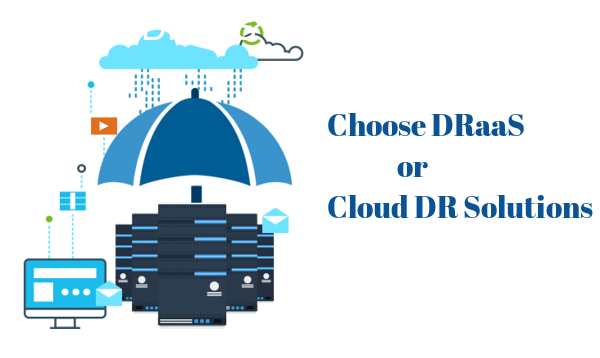Every business must always have a Disaster Recovery or DR plan in place in order to ensure business continuity when there are manmade or natural disasters that can affect their operations. In cloud based DR, there is no need to buy or maintain the backup servers and storage servers. You can sign up for cloud DR with reputed vendors and enjoy a pay-as-you-go model of payment. Businesses can pay for data storage for a longer term and only make payments for the servers they use during failovers and testing periods. So, costs are far lower and this type of disaster recovery is obviously more pocket-friendly for businesses. In cloud based DR, the services will offer machine snapshots of virtual or physical servers within the main data center. The client enterprises therefore simply pay for storing such snapshots or storing apps in suspended state. Besides cloud DR sites can be automated and made to go live in a matter of seconds. So, it can guarantee far better business continuity and nominal data loss. It is possible to trigger cloud based DR sites simply through normal laptops and mobiles having Internet connectivity.
So, depending on business disaster recovery needs there can be two kinds of cloud based DR solutions namely, DRaaS or Disaster Recovery as a service and Cloud DR. Some people tend to use both these interchangeably but that is not right. Businesses are now trying to make a distinction between the two to see which will benefit them the most. For a CIO of any company, it is most essential to ensure that the critical infrastructure and data are properly protected against outages and the business runs without disruptions of any kind. However, when a disaster strikes, even the sturdiest and most resilient infrastructure is liable to get disrupted and business may come to a standstill.
In today’s digital age, companies cannot afford to remain inaccessible even for a few minutes. So, it is absolutely essential to see how quickly your DR plans can help you restore operations. Every CIO will be looking for a fail-proof DR plan which has robust recovery time. It is here that cloud computing can make a huge difference. So, DR today moves from data centers in remote locations to the cloud which can guarantee higher speeds, efficiency and scalability. The cloud successfully protects businesses from the after effects of disasters and spares them of the troubles of managing DR solutions.
How is cloud DR and DRaaS different from one another?
Both DRaaS and cloud DR solutions will try to ensure immediate accessibility and recover ability of business data, and boost business continuity plans. In cloud DR, there will be routine cloud backup and cloud storage of workload data within a multi-tenant environment which can be recovered onto virtual servers when disasters happen. So, the main aim of cloud DR is to allow a business to maintain its backups securely and not worry about location, infrastructure and test procedures. When there is a disaster, the company can get back its data seamlessly. In case of DRaaS, this data availability gets a further boost because customizable failover is added to regular cloud backups and recovery solutions. So, the DRaaS solutions will allow businesses to spin up hot DR sites on either private or public clouds which emulate its production environment. This DR site is also easily accessible across the Internet and it lets business critical apps to stay up and running instantly. This advantage can be enjoyed without having to pay a lot of money for hardware.
Cloud DR will boost an enterprise’s ability to configure its DR parameters flexibly for backing up data. It also allows for faster data recovery and lets a company break away from the complex traditional tape based DR solutions. But before one can adopt the DR on clouds the CIO must ensure that data is going to be shifted securely and that the users will be properly authenticated. So, when a disaster happens, there must be enough connectivity and bandwidth needed to redirect all users to the clouds. DRaaS, on the other hand, will provide comprehensive enterprise-level DR solutions without costs of ownership which is there in in-house plans. So, recurring costs like IT support costs, maintenance costs and energy costs will be maintained by the cloud vendor. DRaaS is easy on the pocket because it needs less operational resources and helps businesses save money on hardware and software licenses. Businesses using DRaaS will also not need to be concerned about backup servers as their vendor will offer state-of-the-art facilities backed by enterprise-level bandwidth and power. The cloud itself works like the DR site and businesses simply pay for facilities according to a utility pricing model. So, while DRaaS may seem slightly costlier to cloud DR, it is in the long run more affordable, scalable and robust compared to in-house DR set-ups. So, for businesses which have flexible tolerance levels for data loss or downtimes during disasters, cloud DR is perfect.
For interesting Topics : What is a Cloud Disaster Recovery?






 Live Chat
Live Chat